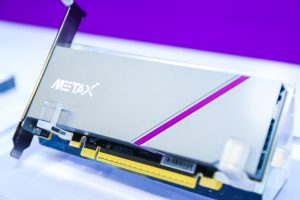Popular Keywords
- About Us
-
Research Report
Research Directory
Semiconductors
LED
Consumer Electronics
Emerging Technologies
- Selected Topics
- Membership
- Price Trends
- Press Center
- News
- Events
- Contact Us
- AI Agent
About TrendForce News
TrendForce News operates independently from our research team, curating key semiconductor and tech updates to support timely, informed decisions.
- Home
- News
[News] Huawei Open-Sources CANN Toolkit for Ascend AI GPUs, Taking Aim at NVIDIA’s CUDA

According to a report by Tom’s Hardware, citing South China Morning Post, Huawei has approved a plan to open-source its CANN software toolkit for Ascend AI GPUs. As noted in the report, the move is intended to strengthen Huawei’s position against NVIDIA and its closed-source CUDA software ecosystem.
The report indicates that open-sourcing CANN (Compute Architecture for Neural Networks) could accelerate developer innovation and improve the usability of Huawei’s Ascend AI GPUs. It may also support China’s broader efforts to reduce reliance on Western chipmakers and encourage developers to build software for the Ascend platform, as noted in the report.
Huawei has reportedly initiated discussions with China’s leading AI companies, business partners, universities, and research institutions on building an open-source ecosystem around the Ascend platform, the report highlights.
CANN is a heterogeneous computing architecture that offers multi-level programming interfaces to help developers build AI applications optimized for Huawei’s Ascend AI GPUs, as explained in the report.
While open-sourcing CANN could help Huawei accelerate adoption of its in-house software toolkit, the report notes that it will likely take years for CANN to match the capabilities and ecosystem support of CUDA, which has been continuously maintained and refined for nearly two decades.
NVIDIA has continued to keep CUDA closed-source, with its software ecosystem closely tied to NVIDIA hardware. However, to further strengthen its AI ecosystem, NVIDIA introduced “NVLink Fusion” in May, providing cloud service providers with a way to scale AI infrastructure to millions of GPUs using any ASIC, along with NVIDIA’s rack-scale systems and end-to-end networking platform, as noted by TechNews.
China’s open-source drive is gaining momentum, with more domestic tech companies working to make their proprietary technologies publicly accessible, as highlighted by Global Times. Just a day before Huawei’s announcement of open-sourcing CANN, Xiaomi open-sourced its self-developed audio large language model, MiDashengLM-7B, as noted in the report. Additionally, Global Times also mentions that Alibaba released Qwen3-Coder in late July, an open-source AI coding model under its Tongyi Qianwen family.
Read more
- [News] Huawei Led Chinese AI Army to Counter U.S. Curbs with New Model-Chip Alliance
- [News] Huawei to Unveil CloudMatrix 384, Rumored to Deliver 2× NVIDIA GB200 NVL72 Throughput
(Photo credit: Huawei)





